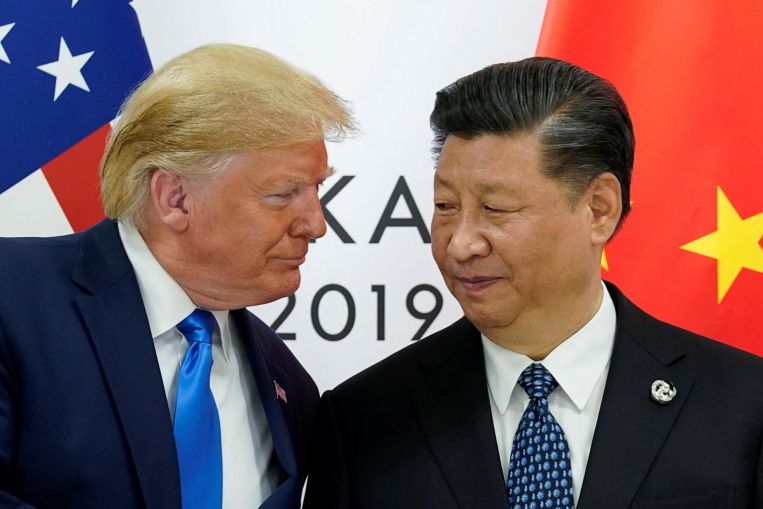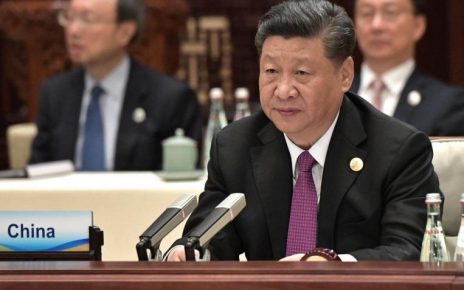
The United States will not impose new tariffs on China for now and will ease restrictions on sales to Chinese telecom giant Huawei, President Donald Trump said yesterday after high-stakes talks with his Chinese counterpart Xi Jinping.
Their meeting on the sidelines of the Group of 20 Summit led to a truce in a seven-week impasse over a multibillion-dollar tariff war that has unnerved financial markets and spurred fears that the world was on the brink of a “clash of civilisations” and a new cold war.
Their cordial mood yesterday was in contrast to the sideswipes and jibes made at the G-20 Summit. Mr Xi accused the US of “bullying practices” when he met African leaders, while Mr Trump pointedly stressed the need for resilience and security of 5G networks in a session on the digital economy.
While the two leaders yesterday pledged to resume talks, lasting peace may yet prove elusive: Neither side has offered any answers on how they might eventually reconcile their respective positions to reach what Mr Trump billed as a “monumental” deal.
Still, the concessions by the US came as Mr Trump said Beijing promised to buy “tremendous” amounts of American food and agricultural products, adding: “We’re going to give them lists of things we’d like them to buy.”
He added that while previous tariffs will not be lifted, he will hold off on his threat to slap 25 per cent levies on more than US$300 billion (S$406 billion) in Chinese imports.
Trade talks collapsed last month, reportedly over Beijing’s discomfort with about 30 per cent of the draft text of the deal, which had included provisions that called for extensive structural reforms. The trade war between the world’s two largest economies has already seen retaliatory tariffs imposed on US$360 billion worth of goods.
“We’re right back on track,” Mr Trump said of yesterday’s meeting, which he called excellent.
A statement by the Chinese Foreign Ministry cited Mr Xi as saying that the two sides “should not fall into the trap of so-called conflict confrontation, but should promote each other and develop together”.
“China is sincere about continuing negotiations with the US to manage differences,” Mr Xi said. “But negotiations should be equal, embody mutual respect and resolve the respective legitimate concerns.”
Meanwhile, Mr Trump acknowledged that Huawei was a complicated situation, saying: “We’re leaving Huawei towards the end. We’ll see where we go with a trade agreement.”
He said that the case involving Huawei’s chief financial officer Meng Wanzhou, who is under house arrest in Vancouver over a US extradition request for allegedly defrauding financial institutions in breach of sanctions on Iran, was not discussed with Mr Xi.
The decision to ease restrictions on the company has raised eyebrows, given that Mr Trump has been actively lobbying allies to avoid using Huawei in their 5G networks on the basis of national security concerns.
“We have a lot of companies in Silicon Valley, we are letting them sell to Huawei… We’re talking about equipment where there’s no great national security problem with it.”
Huawei replied on one of its verified Twitter accounts: “U-turn? Donald Trump suggests he would allow #Huawei to once again purchase US technology!”
Prime Minister Lee Hsien Loong, talking to reporters at the end of the G-20 Summit, said he is happy that the US and Chinese leaders have re-started discussions, but noted this is “just the first step”. “You must expect many twists and turns along the way before some outcome is reached,” he added.
Dr Naoyuki Yoshino, dean of the Asian Development Bank Institute, told The Sunday Times that talks should go beyond just trade to address issues such as exchange rates, capital flows and the relocation of industries as the two countries seek the best way to redress the imbalance.
The 14th G-20 Leaders’ Summit closed yesterday with a declaration that stopped short of denouncing protectionism and exposed fissures on climate change, although there was agreement in areas such as data protection for a digital economy.



